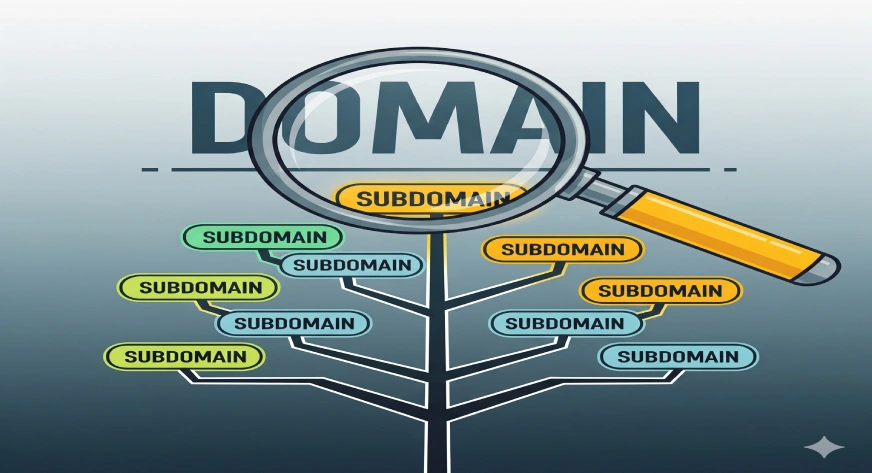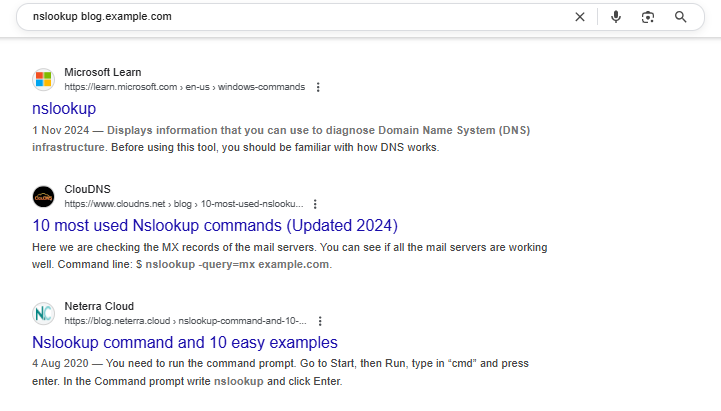How To Find Subdomains of a Domain?

You can find subdomains of a domain by using online tools like DNSdumpster, SecurityTrails, or Sublist3r, which list active subdomains quickly. Another simple way is using Google search with the query site:example.com -www to see subdomains indexed by Google. For more detailed results, you can also run DNS scans that help uncover hidden or unlisted subdomains.
If you own a domain or work in cybersecurity, SEO, or IT management, you’ve probably heard about subdomains. These are extensions of a main domain, like blog.example.com or shop.example.com. They may look simple, but they play a big role in security, visibility, and growth. That’s why it’s important to know how to find subdomains of a domain ,whether it’s your own, a client’s, or even a competitor’s.
This walkthrough shows you how to identify subdomains efficiently, starting with the basics and moving to advanced techniques.
What are the Methods to Find Subdomains
Mannual Methods to Find Subdomains
If you’re new to the process, manual methods are a good starting point. They don’t require advanced tools, just curiosity and a bit of patience.
Google Search Operators
By using advanced search operators, you can often spot subdomains indexed by Google. For example:
Example: A quick search for site:airbnb.com -www shows results from careers.airbnb.com.

Also Read , What are the Best Domains Extensions
DNS Lookups
Tools like nslookup or dig can check whether a specific subdomain exists. You’d try something like:
nslookup blog.example.com. If it resolves, you’ve found a live subdomain.

Browsing Old Records
Services like the Wayback Machine often show snapshots of older versions of a website, including subdomains that may not exist today but can provide valuable insights.

Using Online Subdomain Finder Tools

When you want broader and faster results, online tools come in handy. These platforms pull data from large databases, making it easier to find all subdomains of a domain without much effort.
- SecurityTrails: Offers historical and current DNS data, perfect for spotting both active and retired subdomains.
- Spyse: Known for scanning huge datasets and mapping entire domain infrastructures.
- Censys: Great for discovering subdomains through SSL/TLS certificates.
Example: Searching tesla.com on SecurityTrails reveals dozens of subdomains like shop.tesla.com, auth.tesla.com, and energy.tesla.com.
Benefit: Online tools save time and provide cleaner reports. Many also allow exporting data, which is useful for IT teams and auditors.
If you are looking for which technology is best for website development , then check this!
Command-Line Tools and Scripts

If you want more control and flexibility, command-line tools are the way to go. They are widely used by penetration testers and IT professionals.
- Sublist3r: A Python-based tool that pulls subdomains from multiple search engines. A simple command like sublist3r -d example.com can return dozens of results in seconds.
- Amass: Known as one of the most powerful open-source tools. It uses APIs, scraping, and brute force to provide very comprehensive results.
- Findomain / Assetfinder: Lightweight tools perfect for quick scans or integrating into scripts.
These tools not only save time but also dig deeper than manual methods. However, they require some setup and basic command-line knowledge.
Finding Subdomains Using APIs

Many services provide APIs that allow developers and security experts to automate subdomain searches.
- VirusTotal API: Can return subdomains as part of its domain reports.
- SecurityTrails API: Useful for integrating into security workflows.
- Shodan API: Offers automation for searching exposed subdomains and devices.
A simple script can query these APIs daily, making it easy for businesses to keep track of new or forgotten subdomains. This is especially useful for large organizations with dozens of projects.
Why Finding Subdomains Matters?
Subdomains aren’t just technical extras ,they’re often the hidden parts of a brand’s online identity. Knowing about them can help in many ways:
- Cybersecurity: Many attacks happen because old or forgotten subdomains are left unmonitored. A login page or staging server that isn’t protected could be an easy way in for attackers.
- SEO & Marketing: Ever noticed how companies launch subdomains like deals.domain.com or events.domain.com? Tracking them gives you insight into their campaigns and strategies.
- IT Management: Big organizations sometimes forget about subdomains that were created for past projects. Identifying them helps in cleaning up and reducing risks.
In short, finding subdomains is like shining a light on the corners of the internet that often go unnoticed.
Final Thoughts
Subdomains may seem small, but they carry big weight in security, SEO, and branding. Whether you’re a startup founder, marketer, or security researcher, knowing how to find subdomains of a domain can save you from risks and reveal new opportunities.
The best results come from combining manual tricks, online subdomain finder tools, scripts, certificate logs, and APIs. Used wisely, these methods ensure your domain presence stays safe, visible, and impactful.
While you focus on securing your domain and digital presence, don’t forget the bigger picture—growing your brand online. At WebWorks Co., we support businesses not just with development but also with smart digital marketing strategies. From SEO to targeted campaigns, we help ensure that when people find your website, they also find value worth engaging with.
